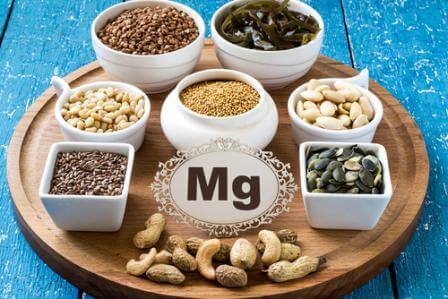Why You Need More Magnesium in Your Diet
Two out of three people don’t get enough magnesium in their diet. Here’s why this matters and how to fix it.
You don’t hear a lot about magnesium these days. Unlike vitamin D or omega-3s, which seem to be in the health headlines every week or so, magnesium seems to be a nutrient that we take largely for granted. Yet 61% of Americans don’t get the recommended amount of magnesium each day. And adults over the age of 50 are even more likely to fall short. Not surprisingly, magnesium was flagged as a “nutrient of concern” by the 2015 Dietary Guidelines Advisory Committee.
Although you’re probably not suffering from any acute symptoms due to magnesium deficiency, you could be missing out on important benefits. A diet rich in magnesium will help you build and maintain stronger bones, keep your blood pressure down, and reduce your risk of heart disease and diabetes.
Magnesium is also not hard to come by. It’s found in a wide variety of whole foods. In fact, if you’re eating a variety of fruits, vegetables, nuts, seeds, and whole grains, it would be hard not to meet the requirement. Low magnesium intake is really a marker for diets that are high in processed foods.
The foods that are rich in magnesium are high in lots of other nutrients, as well. Including more of these foods in your diet will improve your overall nutrition, not just your magnesium status. So rather than just pop a nutritional supplement, increasing our consumption of whole foods is by far the best way to increase magnesium intake.
The Best Sources of Magnesium
Green vegetables are great sources of dietary magnesium because this mineral is part of the chlorophyll molecule that gives plants their green color. If you are eating the recommended five servings of vegetables a day, that’s a third of your requirement right there. Vegetables that are particularly high in magnesium include broccoli, Swiss chard, and green beans.
Magnesium is also naturally present in whole grains but it’s one of the nutrients that gets stripped away when grains are refined. A cup of brown rice, for example, supplies a quarter of of your daily requirement. A cup of white rice provides only about 2% of your daily needs. Bran cereals are also particularly good sources of magnesium.
Nuts and seeds are rich in magnesium, as well. Brazil nuts and sunflower seeds are particularly good sources. But, on average, you can count on getting about 20% of your daily magnesium requirement from a one-ounce serving of any nut or seed.
Legumes, such as lentils, soybeans, lima beans, and all kinds of dried beans, are all good magnesium sources, providing about 20% of your daily needs per serving.
5 Tips for Increasing Your Magnesium Intake
The goal is to get at least 400 mg of magnesium per day. Right now, adults typically get 250 to 300. Simply shifting your diet away from processed foods and towards more whole and minimally processed foods is going to have a positive impact on your magnesium intake (as well as your overall nutrition.) Keep reading for a few ideas:
1. Spread your toast or bagel with peanut butter instead of butter and score an extra 50 mg of magnesium.
2. Choose whole wheat bread over white bread and get an extra 60 mg of magnesium per slice.
3. Have a cup of edamame for a snack and bag another 64 mg of magnesium.
4. Sprinkle a tablespoon of sunflower seeds on your salad and add 30 mg of magnesium
5. Try my Asian Broccoli Salad with Toasted Almonds for dinner tonight and that’s another 250 mg of magnesium.
I don’t want to give you the wrong impression. You don’t have to carefully track and log the amount of magnesium in everything you eat in order to ensure that you’re getting enough. If you simply focus on getting five servings of vegetables, choosing whole grains over refined, and incorporating beans and legumes into your diet on a regular basis and you’ll have this base well covered!
Let me know what you think in the comments below or on the Nutrition Diva Facebook page.







